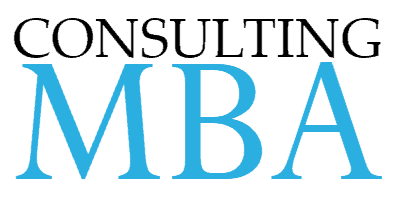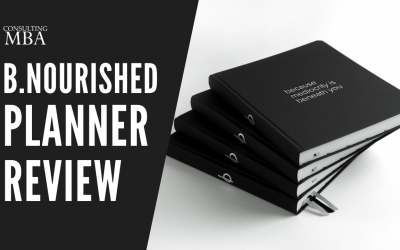Summary
Consultants are hired based on their credibility. You need to find your client at the right time and they must have a need, but that isn’t enough. There are countless other consultants and agencies who can serve your client. How do you stand out? Case studies provide evidence of your process and results produced. This is where credibility is best shared.
In this video, I will share the four steps to creative a case study: from how to choose the right clients, to the questions to ask, to designing the “product” itself, and to distributing it. In this, like all your work, quality trumps quantity. Make your goal to have a few highly effective case studies. Watch this video to guide you in how to create those few powerful case studies.
Transcript
Hey, David Bradley here. And today, I want to talk to you about how you put together a marketing consultant’s case study to effectively show to new prospects, new clients. So there’s going to be four main steps that we want to think about here. And in developing a case study as a consultant, you want to start off with selecting the right clients. Those are the clients that are going to be able to help you show your expertise, your credibility, to help you show the results of what you do in an effective way. So how you might think about that is first with what clients have. You had a great magnitude of success with the results. Where is it impressive in terms of the actual outcomes of your work together? And that’s not just meeting the objectives, but what can you share that makes people stop and actually listen, if there are some profound results, profound difference, and at least a profound testimonial, then you can stop and hear from people.
You know, what, what is it that’s going to trigger that in them. And if you know your clients, if you know your prospects, you know what that’s going to be. You don’t have to just stop and ask. You will inherently know what is something of great magnitude to them. The second thing you might want to think about is who can you go to as a past client to record these results. That is an ideal image of who you want your future clients to be. So there’s representativeness. How much do they represent your ideal clients? So this could be by the nature of the way they do business, the industry, they operate in the size of the business, the situation they find themselves in what you actually did for them, but who represents what you want more of in the third thought you might have is, well, how can I make this diverse in what I’m sharing?
Now you could go down the path of being hyper-focused in one circumstance, one type of client, one service that you offer. And those were all very good things. But even in that space, you want to show some diversity that you’re able to help people with slightly different concerns, at least, but diversity, in the sense of what you offer diversity, in the sense of the situations, people find themselves in when they come to you, diversity in the sense of the results achieved, and the objectives met that at least lets you hit a couple of different angles to show people where you are effective and this should all fit within your space, the framework you build your business within, but it’s still, again, it allows you to address different concerns and allow you to allows you to show your credibility from different angles, which ultimately will allow you to address a larger market without watering down the message.
So select the right clients, magnitudes of success, representativeness to future clients and diversity amongst the different case studies that you are to produce. The second thing you want to keep in mind is selecting the right questions. What are you going to use as guiding questions? Questions that help them to tell the story. You don’t want to put it all on your clients to come up with the case study, but it’s good to incorporate them firsthand and actually participate in creating this. Sometimes they will want you to piece it together and they will critique and respond to it as needed to adjust. But in either case you need to have the right questions that are going to be answered in this case study. So that you’re telling a story. Typically the easiest way to do this is looking at it as before, during and after the client engagement.
So before the engagement, you know, what concerns did you have? What challenges were you facing? What kind of impact did that have on your business? And ultimately what brought you to us in the first place during could be? How was the relationship? How did you feel about the experience? How was it working with us and after what was the result? Did we meet the objectives? How did that change your business? How did that transform, how you operate, how do you feel now that we’ve completed this project? So before, during and after, and that’s where you get the story element out of it. The third aspect is that you need to produce this case study. So you got the right client, you had them work through me before, during, after, and now we need to actually produce it and producing it is easiest. When it’s in a framework of three parts, the challenge, it was faced with the solution to that challenge and the results from that solution being implemented.
And again, that helps you tell the story to put a framework on that before, during, after, but in a presentable way that anyone can look at and really understand. Now in that production, there are many more elements of how do you design it? How do you make sure that it’s presented in the right way? It comes down to good copywriting, primarily but also good design, good communication, clear communication, but that is a whole nother piece. What’s going to the fourth part, which is, well, let’s get it out there. We have to put it to use. And there’s a couple of different ways you can do this. There’s a lot of different ways that you can do this, but the main things that you want to keep in mind, have it on your website. If you create this case study, it should be something that works for you.
And the website is running 24, seven, three 65. So you might as well place it there. You should use it in any sales material outreach. If you’re communicating and nurturing a relationship and they need some more credibility and proof of what you do or just a clearer view of how you work with clients, case studies are a great way to do that in a very tangible way. And it could also be effective for referral partners, people that are going to go out there and send you business. And if they have a case study, it’s something that is not too sales oriented. It’s not too pushy. They’re not setting this friend of theirs up with a sales meeting. They’re setting them up with an example of how someone can help based on their business. This is something that is relevant to you, Jacob, this case study, if you’re interested there’s information in there on how you can reach out to the business, an excellent way to generate referrals and to build that relationship. And that’s really it. Get the right clients, look at the right questions to eliminate the before, during, after frame within a challenge, solution result framework, and then get it out there and whatever channels you can, whatever you’re currently doing that you can enhance with the case study.
Also from Consulting MBA
bnourished Planner Review
I’m a planning and organization nerd. New tools are exciting. New tools mean new learning of ways to be effective, adapting your own style, and growing overall. In this video, I’m breaking down the bnourished planner, which is a new and pretty impressive product.
The Only Way to Offer Discounts to Clients
Discounts are an iffy subject. “Never” is a better answer than “well you should always be ready to offer one!”. There’s a better way to think about and present discounts to clients. Your approach to pricing has a major impact on *profits* of a consulting business. Be smart about how you approach pricing and discounts alike to make your business sustainable.
Do Your Clients See You as a “Peer” or a “Peon”?
Perception is stronger than some like to admit. I challenge you to consider whether you see yourself as a peer or a peon to your clients. And, of course, how your clients see you.
This is pivotal. It isn’t any trick for landing clients or negotiating big deals. No secret marketing hack. The truth is: mindset has a stronger correlation with business performance than any other factor I’ve measured in myself and others.




